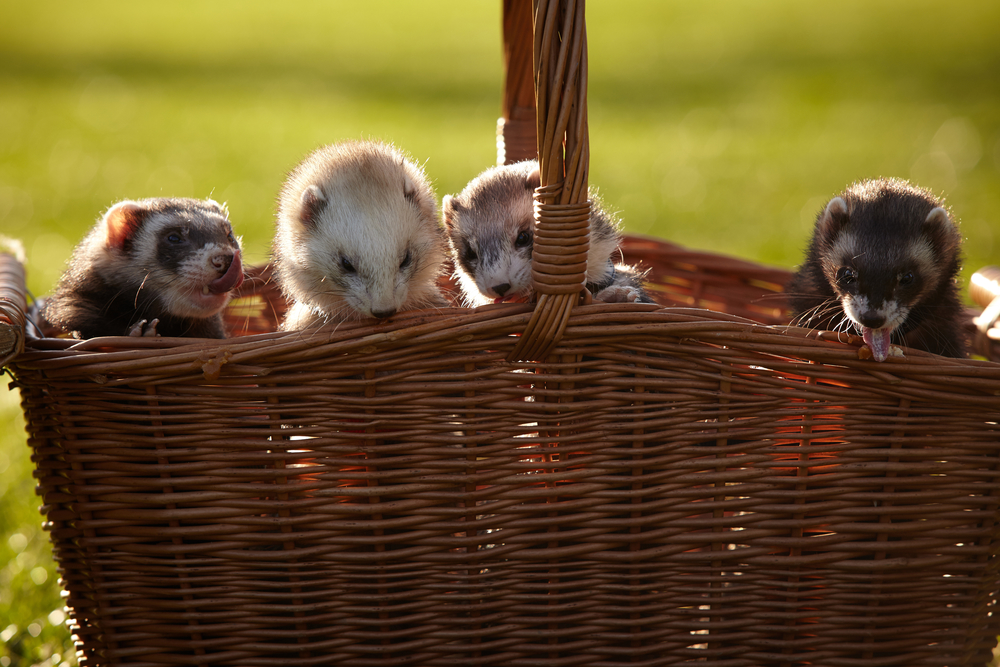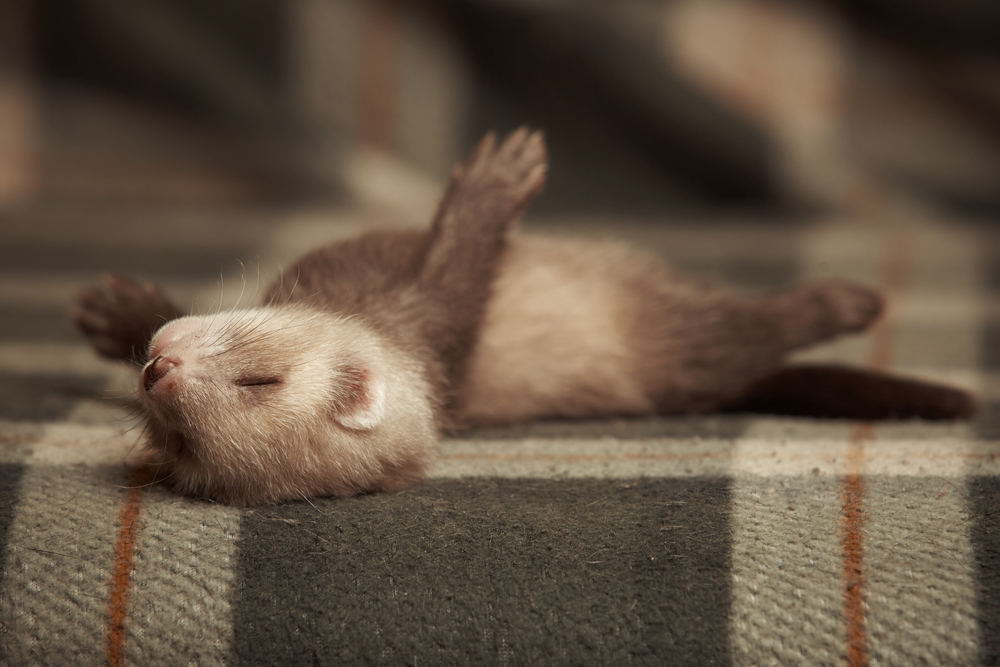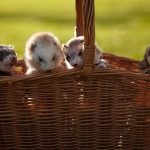Male ferrets, or hobs, begin to come in season for breeding around December of their first year. This early maturation period is characterized by the hob’s aggressive play, intolerance of other males, and a distinct, musky odour. By February of the second year, a male hob is fully mature and able to impregnate a female. The typical hob breeding season is December to July.
Female ferrets, called jills, don’t do much maturing until the second year of life. Jills are induced ovulators, meaning they ovulate only after mating, and will continue to produce high levels of estrogen until they are impregnated. It is crucial that jills not be left in season for any extended period of time, as this can lead to very serious health problems and even death. Spaying is the best way to prevent this condition, although intact jills can receive hormone injections from a veterinarian, or be mated by a sterile hob to be taken out of season. The jill’s breeding season is from March to August.
Once a jill has been impregnated by a mature hob, the normal gestation period for a litter of kits, or baby ferrets, is between 40 and 44 days. The average jill’s pregnancy lasts about 42 days from fertilization to delivery. Jills have been known to produce litters of 12 or more kits, but the usual litter size is about eight. This is an optimal number of babies, as jills have only eight nipples and a large litter could cause complications in terms of her ability to adequately feed and care for her young.









